Regular readers know that I am an old sailor and retired naval officer. And some also know that I am still involved with the sailing community, including STI (Sail Training International). So anything that involves ships, boats and the sea does naturally interest me. However, I am not a great friend and supporter of completely commercialised events that are predominantly large advertisement boards for numerous big companies, with the sailing vessels and their crews degraded to mere 'supporting acts' in the corporate show of vanity.
From today on the spotlight will be on Galway, the largest city in the West of Ireland, which is hosting a two-week-long maritime festival to celebrate their participation in the 2008/2009 international round-the-globe Volvo Ocean Race.
From today on the spotlight will be on Galway, the largest city in the West of Ireland, which is hosting a two-week-long maritime festival to celebrate their participation in the 2008/2009 international round-the-globe Volvo Ocean Race.
In the early hours of this morning the participating boats entered the port of Galway, finishing the 7th leg (of ten) in this demanding race. They had left the US port of Boston at 1300 h local time (1700 h GMT/1800 h BST) on May 16th for their 2550 nm course to Galway, via St. John's (Newfoundland).
The first boat to arrive in Galway was the Ericsson 4 at 0054 h GMT (0154 h BST), winning leg 7 of the race in a time of 7 days, 10 hours, 33 minutes and 51 seconds. Thus Ericsson 4 gained 8 more points, extending her position as the overall race leader with now 94.0 points on the board.
The Irish-Chinese boat Green Dragon - which obviously attracts the greatest interest and support among the maritime community in Ireland - entered Galway at 0315 h GMT (0415 h BST), finishing leg 7 in third position (behind the Puma, which was the runner-up in the Boston to Galway race).
Overall the Green Dragon is now in 5th position (out of 8) on the board, with a total of 53.0 points.
The international round-the-globe Ocean Race, which is one of the most challenging competitions of its kind, began in 1973 (then under the name of a different sponsor) and was inspired by the achievements of two great British sailors, Sir Francis Chichester and Sir Robin Knox-Johnston.
The first boat to arrive in Galway was the Ericsson 4 at 0054 h GMT (0154 h BST), winning leg 7 of the race in a time of 7 days, 10 hours, 33 minutes and 51 seconds. Thus Ericsson 4 gained 8 more points, extending her position as the overall race leader with now 94.0 points on the board.
The Irish-Chinese boat Green Dragon - which obviously attracts the greatest interest and support among the maritime community in Ireland - entered Galway at 0315 h GMT (0415 h BST), finishing leg 7 in third position (behind the Puma, which was the runner-up in the Boston to Galway race).
Overall the Green Dragon is now in 5th position (out of 8) on the board, with a total of 53.0 points.
The international round-the-globe Ocean Race, which is one of the most challenging competitions of its kind, began in 1973 (then under the name of a different sponsor) and was inspired by the achievements of two great British sailors, Sir Francis Chichester and Sir Robin Knox-Johnston.
The 2008/2009 race started last October in the Spanish port of Alicante, with the first leg going all the way across the South Atlantic, down to Cape Town (above) in South Africa.
From there the boats set course for Cochin in India (leg 2), and after some rest they continued east-southeast to Singapore (leg 3). Leaving the 'Pearl of the East' on January 18th, the fleet sailed north on leg 4, to Qingdao (formerly the German colony Tsingtao) in China. From there they set out on leg 5, the longest and toughest part of the competition, with a 12,300 nm course across the Southern Pacific and around Cape Horn (which is the most difficult thing to do for any sailor).
Having left Qingdao on February 14th, only five of the boats - including the Green Dragon - made it through leg 5 and arrived at Rio de Janeiro in late March. It took Ericsson 3 - the winner of this leg - 40 days, 23 hours and 26 minutes of sailing to reach Rio, and the last of the competitors came into port three days later.
After some welcome rest days in sunny Rio de Janeiro, the fleet set sails again on April 11th, embarking on leg 6 of the race to Boston, Massachusetts (below), which they reached on April 26th (and left again for Galway on May 16th).
From there the boats set course for Cochin in India (leg 2), and after some rest they continued east-southeast to Singapore (leg 3). Leaving the 'Pearl of the East' on January 18th, the fleet sailed north on leg 4, to Qingdao (formerly the German colony Tsingtao) in China. From there they set out on leg 5, the longest and toughest part of the competition, with a 12,300 nm course across the Southern Pacific and around Cape Horn (which is the most difficult thing to do for any sailor).
Having left Qingdao on February 14th, only five of the boats - including the Green Dragon - made it through leg 5 and arrived at Rio de Janeiro in late March. It took Ericsson 3 - the winner of this leg - 40 days, 23 hours and 26 minutes of sailing to reach Rio, and the last of the competitors came into port three days later.
After some welcome rest days in sunny Rio de Janeiro, the fleet set sails again on April 11th, embarking on leg 6 of the race to Boston, Massachusetts (below), which they reached on April 26th (and left again for Galway on May 16th).
With seven of the ten legs finished, the overall race positions of the boats are as follows:
- Ericsson 4 (94.0 points)
- Telefonica Blue (81.0 points)
- Puma Ocean Racing (80.0 points)
- Ericsson 3 (62.5 points)
- Green Dragon (53.0 points)
- Telefonica Black (39.0 points)
- Delta Lloyd (31.0 points)
- Team Russia (10.5 points)
On June 6th leg 8 of the race will be started in Galway, sending the boats on a 1250 nm course to the Swedish port of Gotenburg-Marstrand. From there they will go on a short course (leg 9) to Stockholm, and the final leg will bring them from the Swedish capital to St. Petersburg in Russia, where this year's race ends after more than 37,000 nm.
Until June 6th the city of Galway, despite her still unsolved problems with the local drinking water (see my entries of September 23rd, 24th, 27th & 30th, 2008), is hosting a huge festival, which includes all kinds of the arts, music and performances.
Galway has a long reputation for her artists and cultural diversity, as well a being a 'fun city'. So I presume they will make a good effort to please the many visitors that are expected over the two weeks.
But even more interesting for the City Council and Galway's business people are the € 43 million of extra income for the local economy the two-week-long festival is expected to create.
And, given the fact that we have local government elections on June 5th, the sitting members of Galway City Council should also benefit from the additional 'feel-good factor'.
The Emerald Islander
Until June 6th the city of Galway, despite her still unsolved problems with the local drinking water (see my entries of September 23rd, 24th, 27th & 30th, 2008), is hosting a huge festival, which includes all kinds of the arts, music and performances.
Galway has a long reputation for her artists and cultural diversity, as well a being a 'fun city'. So I presume they will make a good effort to please the many visitors that are expected over the two weeks.
But even more interesting for the City Council and Galway's business people are the € 43 million of extra income for the local economy the two-week-long festival is expected to create.
And, given the fact that we have local government elections on June 5th, the sitting members of Galway City Council should also benefit from the additional 'feel-good factor'.
The Emerald Islander





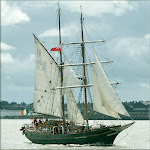

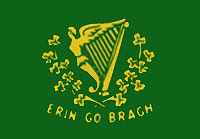




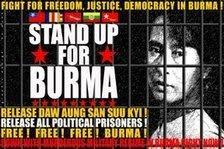
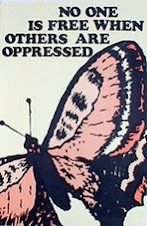






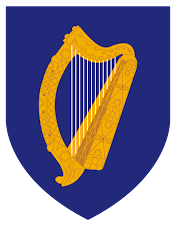






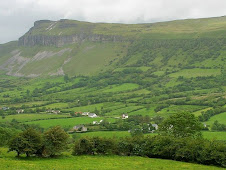
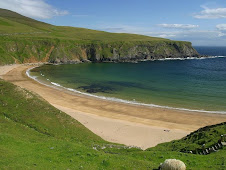













No comments:
Post a Comment